Unleashing Organizational Potential: Guide to Navigating the Human-Machine Capital Revolution
- Judy

- 2 days ago
- 7 min read
Updated: 7 hours ago
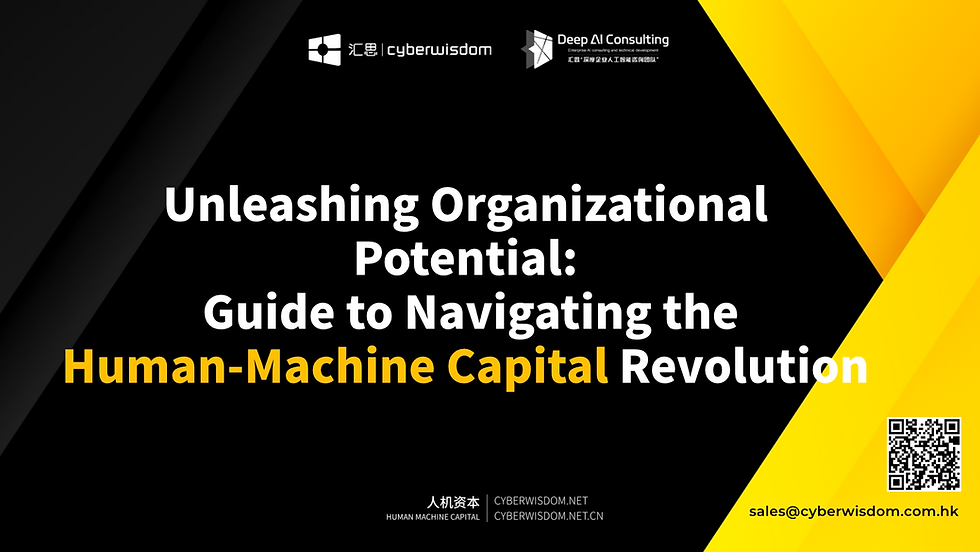
In the era of digital transformation, a quiet revolution is reshaping the very foundation of organizational success: the rise of Human Machine Capital (HMC). This paradigm shift—from managing human capital alone to orchestrating the synergy between humans, AI bots, and intelligent agents—presents the most formidable challenge yet for HR Business Partners (HRBPs). The role of HRBP is no longer confined to traditional people management; it now demands mastery of a new ecosystem where "digital employees" work alongside human teams, and competitive advantage hinges on seamless human-machine collaboration.
The transition from Human Capital Management (HCM) to HMC is not an incremental change but a fundamental reimagining of how value is created in organizations. For HRBPs, this means moving beyond tactical AI tools that streamline administrative tasks (e.g., automating payroll or resume screening) to architecting strategies that integrate humans and machines as a cohesive, high-performing unit. The stakes could not be higher: organizations that fail to navigate this shift will struggle to compete, while those that embrace it will unlock unprecedented efficiency, innovation, and resilience.
The End of HCM as We Know It: Why Traditional HRBP Roles Are No Longer Sufficient
Human Capital Management (HCM) has long centered on optimizing the productivity and potential of human employees through recruitment, training, performance management, and culture building. This framework assumes humans are the sole drivers of value—a premise that crumbles in the face of AI, robotics, and intelligent automation. Today, "employees" include not just people but also AI-powered chatbots handling customer service, RPA agents processing invoices, and machine learning models predicting employee turnover.
For HRBPs, this expansion of the workforce creates three existential challenges that render traditional HCM obsolete:
1. Managing a "Hybrid Workforce" Requires a New Lexicon of Skills
In a factory, a team might consist of 30 assembly line workers, 5 autonomous quality-control robots, and a central AI system that allocates tasks. In a corporate setting, a marketing team could include content creators, a generative AI tool drafting initial campaigns, and a sentiment-analysis bot refining messaging. HRBPs must now evaluate, develop, and retain both human and digital team members—a task requiring fluency in two entirely different "skill sets."
For humans: Skills like emotional intelligence, strategic thinking, and adaptability remain critical, but they must be augmented with "AI literacy"—the ability to collaborate with machines, interpret their outputs, and guide their development.
For digital employees: "Skills" include algorithm accuracy, data processing speed, and integration capabilities. HRBPs must assess how well a chatbot handles nuanced customer inquiries or how effectively a machine learning model predicts sales trends—metrics far removed from traditional performance reviews.
This duality demands HRBPs become bilingual: fluent in organizational psychology and basic AI functionality. A failure to understand AI’s limitations (e.g., an inability to grasp ethical nuances) or humans’ unique strengths (e.g., creative problem-solving) can lead to disastrous misalignment—such as over-reliance on AI for sensitive employee feedback or underutilizing machines for repetitive tasks.
2. Value Creation Shifts from Individual Performance to Collaborative Synergy
HCM thrives on optimizing individual human output: a salesperson’s quota, an engineer’s project deadlines, a manager’s team retention rate. In HMC, value lies in the interaction between humans and machines. A customer service agent paired with a well-trained chatbot might resolve 30% more issues than either could alone; a data analyst working with predictive AI might uncover insights neither would find independently.
HRBPs must therefore redefine success. Performance metrics can no longer focus solely on human productivity or AI efficiency but must measure collaborative outcomes:
How quickly do human-machine pairs resolve customer complaints?
How often does AI-generated data lead to human-driven innovations?
Does the team’s "collective intelligence" (human + machine) improve over time?
This shift requires HRBPs to design incentive systems that reward collaboration, not just individual achievement. For example, a sales team’s bonus might depend on how effectively humans leverage AI lead-scoring tools, rather than solely on revenue numbers. Failing to align incentives with collaborative goals risks creating silos—humans resisting AI "interference" or machines being underutilized due to lack of human buy-in.
3. Organizational Learning Evolves from Human-to-Human to Human-Machine Knowledge Networks
In HCM, knowledge flows through training programs, mentorship, and documentation—all human-centric processes. In HMC, knowledge must circulate between humans and machines. A senior engineer’s intuition about product design must be codified into rules that AI can learn; an AI’s pattern recognition in customer data must be translated into actionable strategies for human marketers.
HRBPs are now tasked with building "knowledge ecosystems" where:
Human expertise (e.g., negotiation tactics, cultural awareness) is digitized into AI-trainable frameworks.
AI insights (e.g., employee engagement trends, market shifts) are made accessible and actionable for humans.
Both human and machine knowledge evolve iteratively through feedback loops.
Consider a scenario where a HRBP uses a tool like LyndonAI’s Kora system to map "onboarding best practices": human managers’ advice ("Prioritize relationship-building in week one") is paired with AI analytics ("New hires who complete module X in the first 48 hours have 20% higher retention"). This merged knowledge base benefits both humans (who gain data-backed guidance) and machines (which refine their onboarding recommendations based on human input). Without HRBPs curating these networks, valuable knowledge remains trapped in silos—humans hoarding tacit expertise, machines generating insights that go unused.
HRBP as the Architect of Human-Machine Collaboration: Core Competencies for HMC
To thrive in HMC, HRBPs must evolve from "people partners" to "human-machine orchestrators." This role demands three critical competencies that extend far beyond traditional HR skills:
1. Translating Business Strategy into Human-Machine Workflows
HRBPs have long bridged HR and business goals, but in HMC, they must translate high-level strategies (e.g., "Improve customer satisfaction") into precise human-machine 分工 (division of labor). For a retail company aiming to reduce customer wait times, this might mean:
Assigning AI chatbots to handle routine inquiries ("Where is my order?").
Reserving human agents for complex issues ("My shipment arrived damaged—can you escalate?").
Designing handoff protocols (e.g., "If a chatbot detects frustration, transfer to a human within 30 seconds").
This requires HRBPs to understand both business needs and technology capabilities. They must work with IT teams to identify which tasks AI can perform reliably, collaborate with frontline managers to assess human strengths, and iterate on workflows based on real-world feedback. A HRBP at a logistics firm, for example, might discover that AI route-planning tools work best when paired with human drivers’ local knowledge (e.g., "Avoid this street during morning rush")—a synergy only uncovered through close collaboration with both teams.
2. Mitigating the Tensions of Human-Machine Coexistence
Introducing AI into workflows often triggers anxiety: Will machines replace human jobs? Can employees trust AI recommendations? HRBPs must act as "trust brokers," balancing efficiency with empathy to ensure humans and machines coexist productively.
Addressing fear of replacement: HRBPs can redesign roles to emphasize uniquely human skills. For instance, when a manufacturing plant adopts AI quality-control robots, HRBPs might retrain inspectors to focus on "exception handling" (resolving cases the AI flags as ambiguous) rather than routine checks—turning a perceived threat into an opportunity for upskilling.
Ensuring ethical AI use: Tools like LyndonAI’s TRISM framework help HRBPs audit AI for bias (e.g., in recruitment algorithms) and set guardrails (e.g., "AI can suggest promotions but not make final decisions"). This builds confidence that machines are fair and accountable.
Fostering a collaborative culture: Through team-building exercises, workshops, and storytelling, HRBPs can highlight success stories—like a customer service team that boosted satisfaction by 40% through human-AI collaboration—shifting perceptions from "AI vs. humans" to "AI + humans."
3. Leveraging Data to Optimize (and Evolve) Human-Machine Systems
In HMC, intuition is no longer enough. HRBPs must become data-driven architects, using tools like LyndonAI’s dashboards to monitor human-machine performance and make iterative improvements. For example:
If data shows AI onboarding tools reduce training time but new hires report feeling "disconnected," HRBPs might adjust workflows to include more human check-ins.
If sales teams underutilize AI lead-scoring, HRBPs could analyze why (e.g., "The AI’s criteria feel irrelevant") and refine the tool with input from top performers.
This requires HRBPs to understand not just HR metrics but also AI performance indicators—such as algorithm accuracy, data quality, and integration speed. They must also communicate these insights to non-technical stakeholders, translating jargon into actionable takeaways (e.g., "Increasing the chatbot’s access to customer history will reduce human agent workload by 15%").
The Stakes: Why HRBPs Cannot Afford to Lag in HMC
The cost of HRBPs failing to adapt to HMC is steep. Organizations with misaligned human-machine systems face:
Efficiency losses: Redundant work (humans and machines duplicating efforts) or gaps (tasks falling between the cracks).
Innovation stagnation: Failing to leverage AI’s pattern recognition or human creativity.
Cultural breakdowns: Resistance to AI, low morale, or high turnover as employees feel their roles are devalued.
Conversely, HRBPs who master HMC become irreplaceable strategic assets. They enable organizations to:
Scale operations without proportional increases in headcount (e.g., AI handling 80% of routine HR queries, freeing humans for complex employee issues).
Innovate faster (e.g., AI identifying retention risks, humans designing targeted interventions).
Build resilience (e.g., human adaptability + AI’s 24/7 availability ensuring continuity during crises).
HRBP as the Catalyst for HMC Success
The shift from HCM to HMC is not coming—it is here. For HRBPs, this is not merely a challenge but a defining moment to reimagine their role as architects of human-machine collaboration. Those who cling to traditional people management will find themselves marginalized, while those who embrace the complexity of HMC will become the backbone of their organizations’ success.
The path forward is clear: HRBPs must learn to speak the language of both humans and machines, design systems that amplify their combined strengths, and foster cultures where collaboration, not competition, defines the human-machine relationship. In doing so, they will not only survive the HMC revolution—they will lead it.
As the boundaries between human and machine work blur, one truth remains: organizations succeed not because of their technology or their people alone, but because of how well their people and technology work together. And no role is more critical to that success than the HRBP.
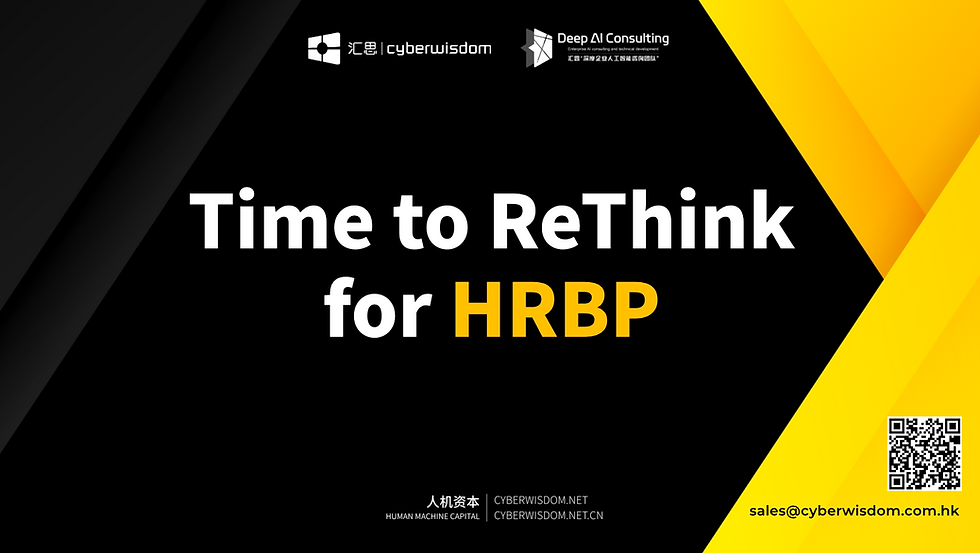
About Cyberwisdom Group
Cyberwisdom Group is a global leader in Enterprise Artificial Intelligence, Digital Learning Solutions, and Continuing Professional Development (CPD) management, supported by a team of over 300 professionals worldwide. Our integrated ecosystem of platforms, content, technologies, and methodologies delivers cutting-edge solutions, including:
wizBank: An award-winning Learning Management System (LMS)
LyndonAI: Enterprise Knowledge and AI-driven management platform
Bespoke e-Learning Courseware: Tailored digital learning experiences
Digital Workforce Solutions: Business process outsourcing and optimization
Origin Big Data: Enterprise Data engineering
Trusted by over 1,000 enterprise clients and CPD authorities globally, our solutions empower more than 10 million users with intelligent learning and knowledge management.
In 2022, Cyberwisdom expanded its capabilities with the establishment of Deep Enterprise AI Application Designand strategic investment in Origin Big Data Corporation, strengthening our data engineering and AI development expertise. Our AI consulting team helps organizations harness the power of analytics, automation, and artificial intelligence to unlock actionable insights, streamline processes, and redefine business workflows.
We partner with enterprises to demystify AI, assess risks and opportunities, and develop scalable strategies that integrate intelligent automation—transforming operations and driving innovation in the digital age.
Vision of Cyberwisdom
"Infinite Possibilities for Human-Machine Capital"
We are committed to advancing Corporate AI, Human & AI Development, enabling enterprises to thrive in an era of intelligent transformation.
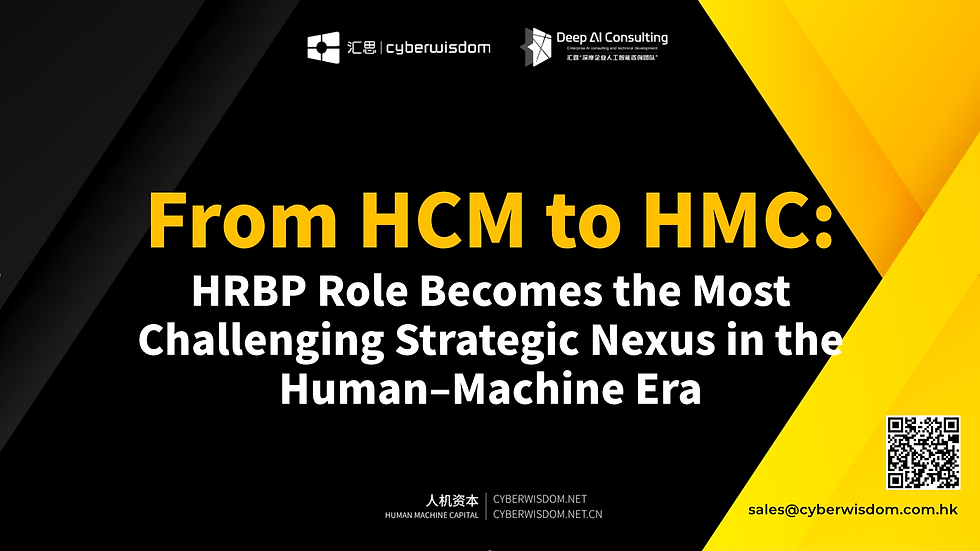
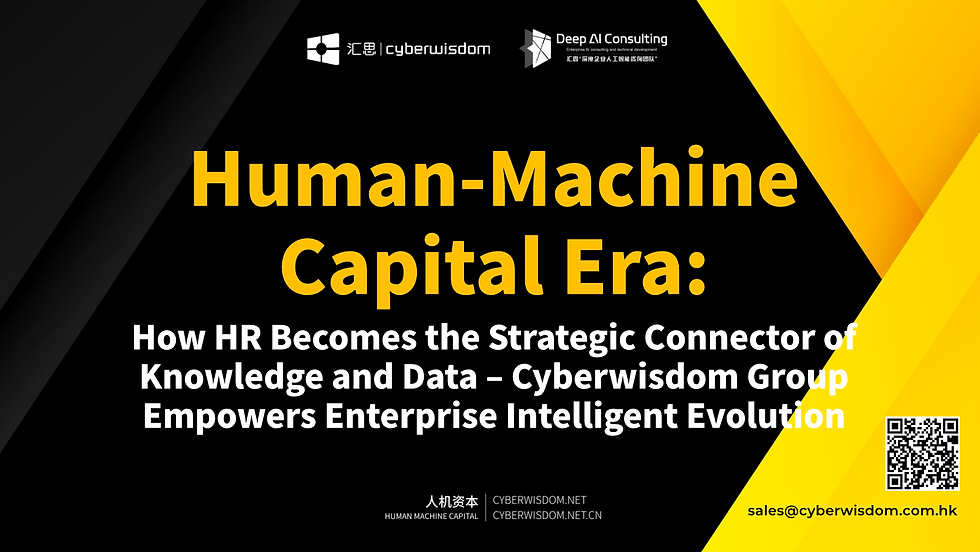
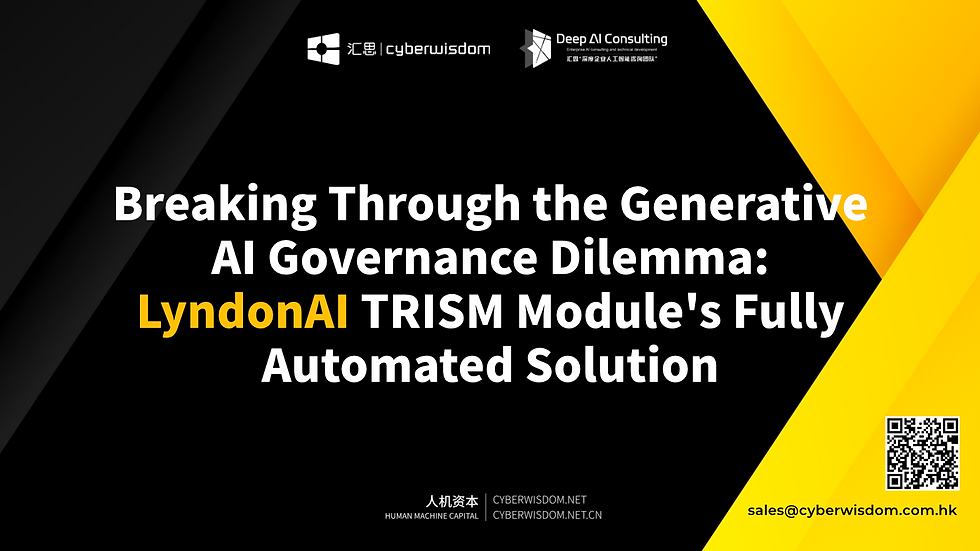
Comments